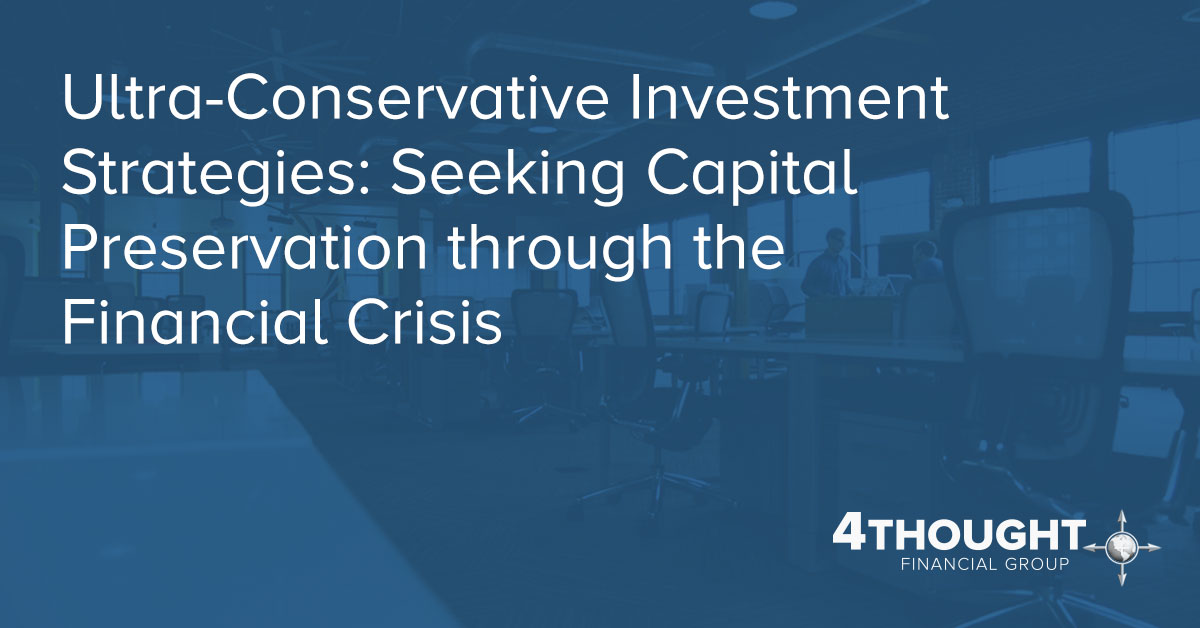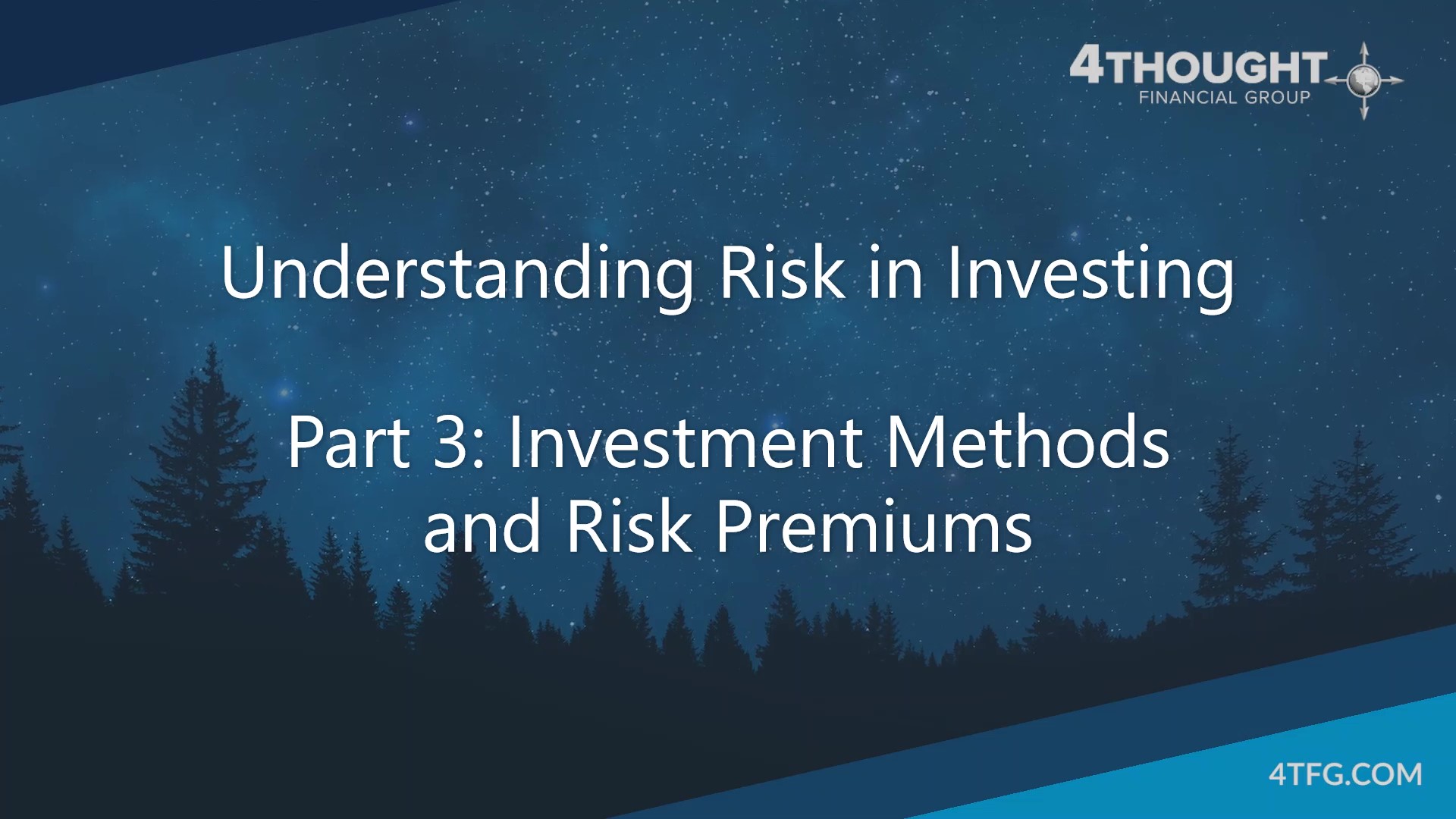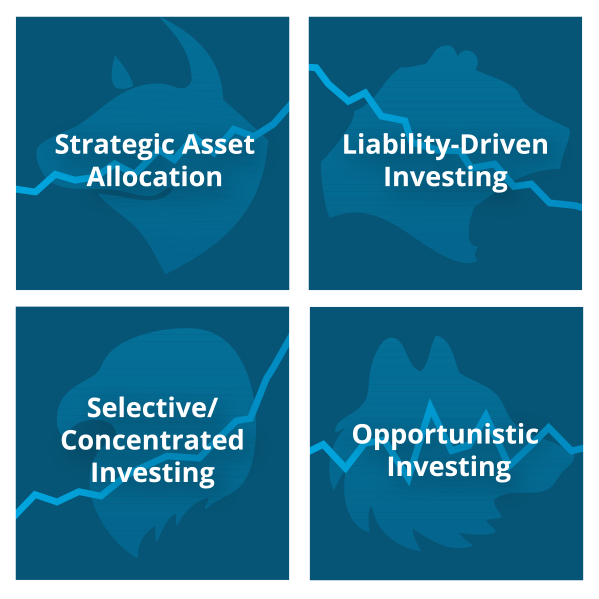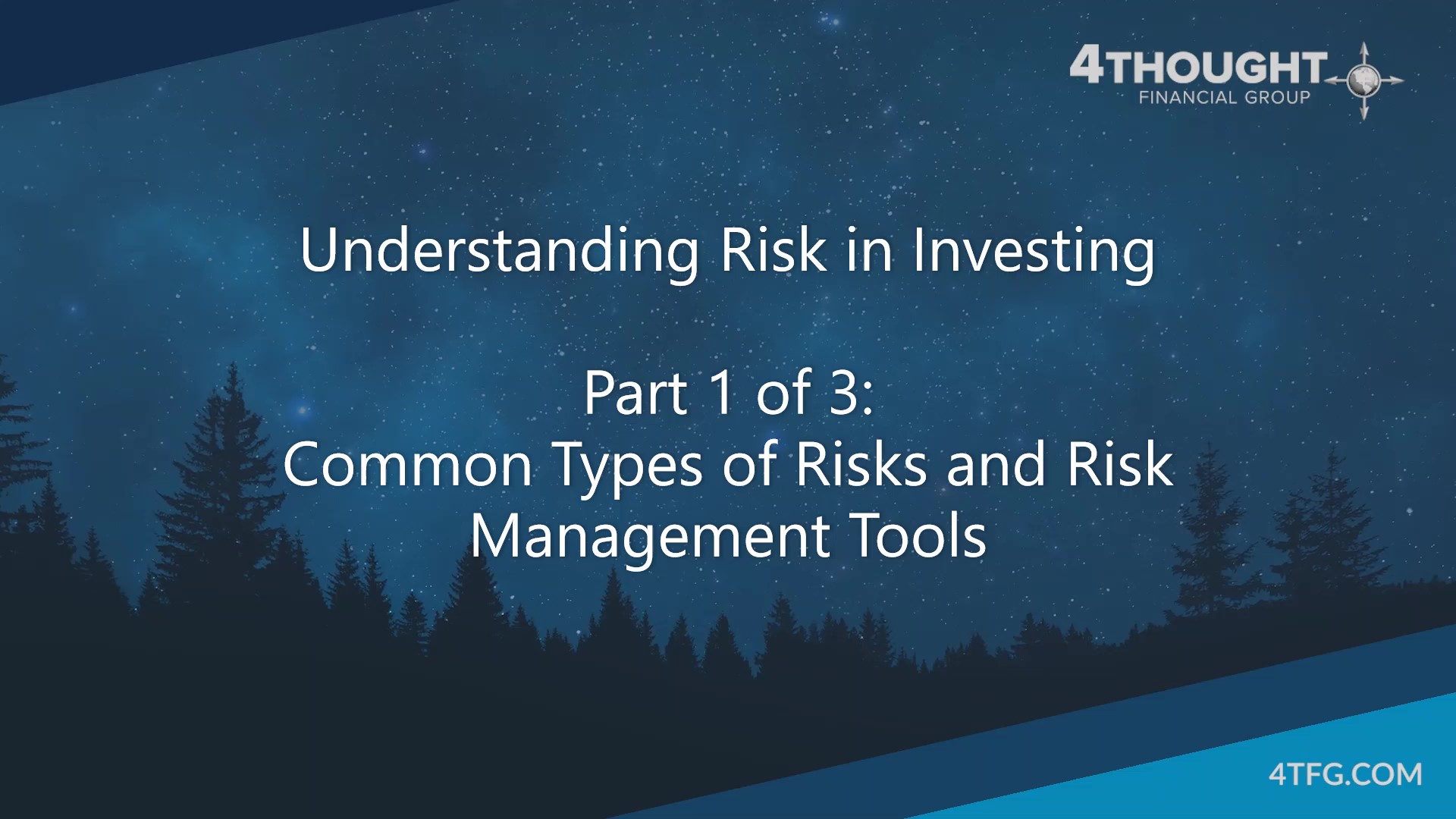
Many clients who have been witness to major drops in their investment portfolios over the last year have come to the realization that they are far less risk tolerant than they had originally believed. For these clients, as well as those whose life circumstances may have changed as a result of the financial market crisis, it may become appropriate to reallocate portfolios on a much more conservative basis – using an ultra-conservative methodology.
For most investors with a long time horizon, ultra conservative investing is not appropriate on an analytical basis (as opposed to an emotional one), but for those clients who have a short investment time horizon or extremely low risk tolerance, it is necessary to provide appropriate options. We will explore some of these in this issue. First we will explore some options for pure capital preservation, and then for capital preservation plus participation in any forthcoming market turnaround.
Before we do this, there is a very important discussion that must be attended to – that of risk. There is a mistaken assumption amongst the investing public (and within the investment profession) that money can be invested on a riskless basis. This is a fallacy.
All investable assets have an element of risk – even bank savings accounts, even money markets, and even US Treasuries. The attention paid to FDIC, SIPC, and the US Treasury portfolio of late pays tribute to this fact. Granted, bank savings accounts are generally low risk investments in terms of portfolio volatility, but there is always the risk of bank failure to maintain adequate reserves (part of which is covered by FDIC), and the further risk that the US Government will be unable to cover FDIC in the event that it’s use becomes necessary on a large scale. Money market accounts and funds can “break the buck,” which occurred with several money market funds in September of ’08.
The probability of these events is, of course, low. However, just because an event is not probable does not mean it is not possible. The world financial system continues to prove this point on many fronts.
Cash in a mattress has no market exposure and earns no interest.
Clients could always resort to stuffing cash in mattresses and buying gold, but even this is risky. Cash in a mattress has no market exposure and earns no interest. Thus it is subject to real value loss due to inflation. Hard cash is also subject to local purchasing power fluctuation. Cash in a mattress entails the additional real risk of burglary. Although gold has never been worth nothing, it is subject to its own market value fluctuation and similar risks as described above.
The final point that is being made here is this: Nothing is 100% safe. Risk always exists in any asset class. The trick is to find the right balance of risk and return, while reducing specific risks as much as is appropriate for the client in question.
***
With this in mind, let’s look at some of the specific risks that apply within the context of our forthcoming ultra-conservative portfolios:
Inflation Risk: The risk that an investment will not keep pace with inflation, resulting in a loss of real portfolio value and purchasing power over time.
Issuer Credit Risk: The risk that a security/product issuer will be unable to service the debt or pay the claims that it says it will. This can also be interpreted as the inability of a guarantor to make good on a guarantee. As such, it can apply to governments as well as private institutions.
Liquidity Risk: In this context, liquidity risk represents the risk that an investor will need to access their assets unexpectedly. Such access in a fixed income investment prior to maturity may result in an unpredictable market value adjustment, potentially resulting in loss of principal.
Reinvestment Risk: The risk associated with the unavailability of knowledge as to future investable market assets at the time that a fixed income investment matures. (ie. We don’t know what yield we will be able to acquire upon the reinvestment of the principal from a matured bond in the future, and thus we don’t know with accuracy what the eventual value of an extended investment will be).
Relative Performance: This is the risk associated with “keeping up with the Jones’”. It is an emotional/behavioral risk experienced by some people when they see their fixed income portfolio’s meager returns after their neighbors stock-heavy portfolio accelerates during a market turnaround. It is the risk associated with an inability to recognize the opportunity costs to investing.
Growth Goal Shortfall: This is the risk that a portfolio will notachieve an accumulation goal. Given a certain time frame, principal value, and contributions, one can calculate the average rate of return necessary to achieve an accumulation goal. However, if the portfolio is not properly allocated to target this rate of return or higher, the probability of achieving that goal in full is very low.
Domestic Government/Political Risk: In the context of our upcoming suggestions, political risk can be closely linked to issuer credit risk. The decisions that governments make with regards to their own portfolios and legislation can dramatically affect the value and safety of the securities that they issue, such as Treasuries.
No Real Growth: This is a risk often associated with inflation-indexed securities such as TIPS. Although the inflation-protected securities will generally keep pace with inflation and the investment will hold its original value on a realbasis, there is no potential for growth on a real basis. TIPS are designed to hold value, not increase it.
Market Volatility Risk: This is the risk with which most individual investors are familiar - that of fluctuation in the value of a security or portfolio of securities as a result of changes in values in the respective market (ie. Stock market, municipal bond market, real estate market). Below we will reflect only downside market volatility risk under “Remaining Significant Risks.”
With our basic understanding of some of the risks associated with ultra-conservative investing, we can assess which of the following may be appropriate for a specific client’s situation. Each of the following portfolio options may be used as stand-alone conservative portfolios, or more often, in combination with one another to produce a desired result.
***
Pure Capital Preservation Portfolio Options
The following listed options are recommended for clients that want to preserve their capital to the utmost, and have no interest in participating in a stock market turnaround when it occurs:
1. Fixed income ladder
Description: Individual fixed income issues of a certain type (ie. CDs, Muni bonds, corporate bonds, or Treasuries) are bought with progressive maturity dates, with the longest maturity set at the time that principal needs to be accessed (if applicable). The coupons and matured principal from the securities are used to provide client income or are reinvested depending on predetermined or unexpected needs.
Remaining Significant Risks:
◍ Inflation Risk
◍ Issuer Credit Risk
◍ Liquidity Risk
◍ Reinvestment Risk
◍ Relative Performance
◍ Growth Goal Shortfall
2. Treasury Inflation Protected Securities
Description: A portfolio of TIPS is purchased as a direct hedge against inflation risk and the associated long term reduction in real value of a portfolio. This approach is most appropriate when using an Asset/Liability Matching methodology to protect the real value of a pool of assets to be used for a specific purpose in the future and when the client has no interest in actually growing the asset base on arealbasis.
Remaining Significant Risks:
◍ Domestic Government/Political Risk
◍ Relative Performance
◍ No Real Growth
◍ Growth Goal Shortfall
◍ Relative Performance
◍ Growth Goal Shortfall
3. Diversified Fixed Income Portfolio
Description: A diversified portfolio of various fixed income security types (CDs, individual bonds, TIPS, etc) is purchased in the form of individual issues held to maturity. Additional fixed income asset classes may be purchased in the form of ETFs or mutual funds. (ie. International bonds, floating rate securities, etc.) Coupon payments and principal are reinvested as they become available. Bond ladders are utilized when the point of principal need is unknown, while target maturity dates may be used if the point of principal need is known.
Remaining Significant Risks:
◍ Inflation Risk
◍ Relative Performance
◍ Reinvestment Risk
◍ Growth Goal Shortfall
4. Deferred Fixed Annuities
Description: In a deferred fixed annuity assets are invested with an insurance company, who agrees to pay a fixed rate of return on the investment for a fixed period of time, with surrender charges that apply if money is withdrawn before a minimum holding period elapses. Principal and returns are guaranteed by the issuing insurance company.
Remaining Significant Risks:
◍ Inflation Risk
◍ Issuer Credit Risk
◍ Relative Performance
◍ Growth Goal Shortfall
◍ Liquidity Risk
***
Options to Preserve Capital and Participate in a Potential Market Turnaround
The following listed options are appropriate for clients that would like to preserve the value of their principal as much as possible over the long term while still allowing participation in a stock market turnaround in the short and intermediate term:
1. Ultra-Conservative Modern Portfolio Theory portfolio
Description: The portion of the overall portfolio that is determined to require maximum safety of principal is invested in individual fixed income securities issues held to maturity (usually in a laddered format), while the remainder of the portfolio is invested in a diversified portfolio of stock, real assets, and alternative investments to provide beta in the event of a market turnaround.
Remaining Significant Risks:
◍ Market volatility risk
2. Variable annuity with income guarantee rider*
Description: 100% of the assets are invested in mutual fund subaccounts to maximize upside market potential while investors pay a fee for an insurance rider that provides a guarantee of invested amount or guaranteed growth of the invested amount for the purposes of a predictable lifetime income stream later (or sometimes immediately). There is no guarantee of principal for the purposes of a lump sum distribution, but living benefit amounts are guaranteed to remain static or grow for the purposes of a guaranteed lifetime income in the future.
Remaining Significant Risks:
◍ Issuer Credit Risk
◍ Liquidity Risk
*Investors are asked to consider the investment objectives, risks, charges and expenses of the investment carefully before investing. Both the product and the underlying fund prospectuses contain this and other information about the product and underlying investment options. Please read the prospectuses carefully before investing. Guarantees apply to certain insurance and annuity products and are subject to product terms, exclusions, limitations and the insurer’s claims paying ability and financial strength. Riders are available at an additional charge.
3. Structured Product/ Principal Protected Note
Description: In a principal protected note, assets are invested as described by the individual note, generally in a stock or other asset type portfolio, to provide upside market potential for a fixed period of time. If the client holds the note to maturity, the issuer guarantees to return the principal to the client at minimum, while increases in the portfolio value will result in gains. The investor pays a fee to the issuer for this principal guarantee, which may result in reduced returns.
Remaining Significant Risks:
◍ Issuer Credit Risk
◍ Liquidity Risk
4. Fixed Income portfolio with stock reinvestment
Description:100% of the assets are initially invested in a Fixed Income Ladder or Diversified Fixed Income portfolio as described above with individual securities held to maturity. Upon payment of coupons and/or maturation of issues, the released cash is reinvested in a diversified stock/alternative portfolio to provide upside growth potential.
Remaining Significant Risks:
◍ Market volatility risk
◍ Relative Performance
◍ Reinvestment risk
◍ Liquidity Risk
***
If you would like to learn more about any of these options or how they might apply to one of your clients, contact your 4Thought advisor.







Leave a Comment